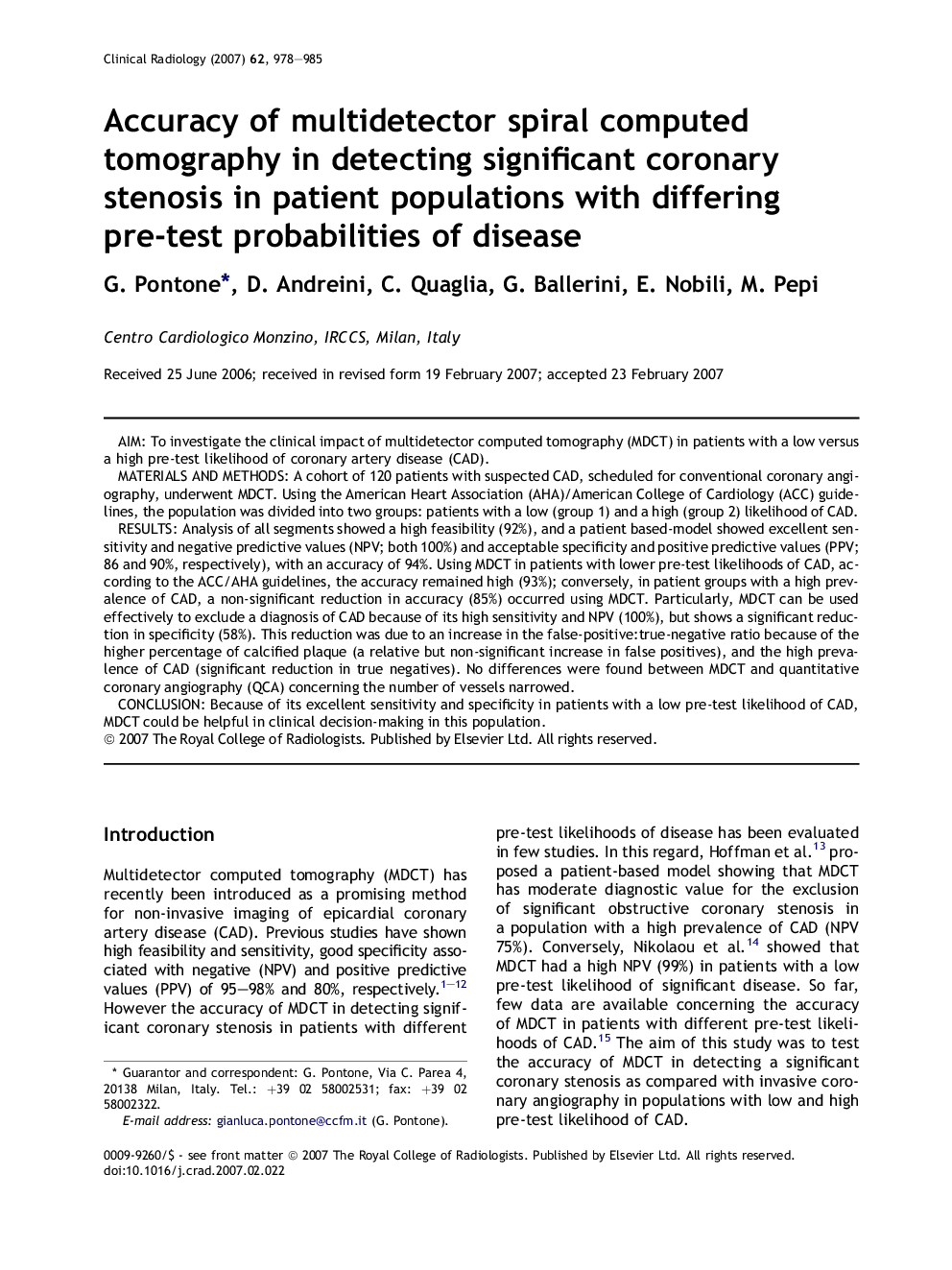| Article ID | Journal | Published Year | Pages | File Type |
|---|---|---|---|---|
| 3983632 | Clinical Radiology | 2007 | 8 Pages |
AimTo investigate the clinical impact of multidetector computed tomography (MDCT) in patients with a low versus a high pre-test likelihood of coronary artery disease (CAD).Materials and methodsA cohort of 120 patients with suspected CAD, scheduled for conventional coronary angiography, underwent MDCT. Using the American Heart Association (AHA)/American College of Cardiology (ACC) guidelines, the population was divided into two groups: patients with a low (group 1) and a high (group 2) likelihood of CAD.ResultsAnalysis of all segments showed a high feasibility (92%), and a patient based-model showed excellent sensitivity and negative predictive values (NPV; both 100%) and acceptable specificity and positive predictive values (PPV; 86 and 90%, respectively), with an accuracy of 94%. Using MDCT in patients with lower pre-test likelihoods of CAD, according to the ACC/AHA guidelines, the accuracy remained high (93%); conversely, in patient groups with a high prevalence of CAD, a non-significant reduction in accuracy (85%) occurred using MDCT. Particularly, MDCT can be used effectively to exclude a diagnosis of CAD because of its high sensitivity and NPV (100%), but shows a significant reduction in specificity (58%). This reduction was due to an increase in the false-positive:true-negative ratio because of the higher percentage of calcified plaque (a relative but non-significant increase in false positives), and the high prevalence of CAD (significant reduction in true negatives). No differences were found between MDCT and quantitative coronary angiography (QCA) concerning the number of vessels narrowed.ConclusionBecause of its excellent sensitivity and specificity in patients with a low pre-test likelihood of CAD, MDCT could be helpful in clinical decision-making in this population.
